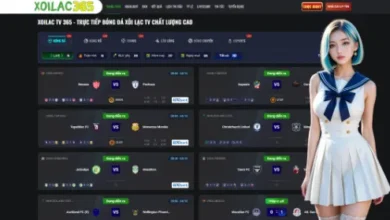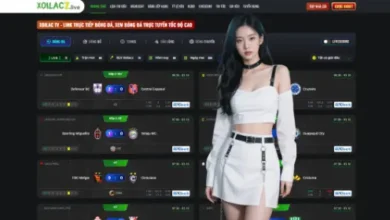Visualizing Data with Precision with JavaScript Charts

In an era where data drives decision-making, visualizing complex data in a clear and concise way is essential. JavaScript charts have become one of the most versatile and widely used tools for creating interactive, dynamic charts that can be embedded into web applications. Unlike static graphs, JavaScript-based charts are adaptable and responsive, making them a preferred choice for developers and businesses alike.
As businesses continue to rely on data visualization to analyze performance, customer behavior, and market trends, JavaScript charts offer a range of benefits—from ease of integration to the capability of handling large datasets in real time. By understanding the nuances of different JavaScript charting libraries, developers can leverage the power of these tools to deliver insightful, impactful visualizations.
Contents
Why JavaScript Charts Dominate the Web
JavaScript is an essential language for front-end web development, and its charting capabilities have made it a key player in data visualization. With the increasing demand for responsive and user-friendly web applications, JavaScript charts provide flexibility and a seamless user experience across devices. Many industries, from finance to healthcare, use JavaScript charts to present data in a visually appealing and understandable format. These charts can be customized to display everything from simple line graphs to intricate multi-axis graphs and interactive dashboards.
A developer from SciChart, a prominent name in high-performance charting libraries, notes: “The key to effective data visualization is not only in the design but in how the data is processed and displayed. JavaScript charts allow developers to ensure that performance doesn’t degrade as data becomes more complex.”
JavaScript charting libraries, such as Chart.js, D3.js, and SciChart, offer varying levels of complexity and customization options. Each of these libraries provides a set of tools to build powerful data visualizations tailored to specific project needs.
Choosing the Right JavaScript Charting Library
There are several JavaScript charting libraries available, each with its unique strengths and use cases. The choice of which one to use depends largely on the project’s complexity, data size, and desired level of interactivity.
Chart.js, for example, is ideal for projects that require simple and intuitive chart creation. It’s lightweight and easy to use, which makes it an excellent option for beginners or projects that don’t need highly advanced features. The library supports a variety of chart types, including bar, line, radar, and pie charts, providing flexibility for most web-based visualizations.
On the other end of the spectrum is D3.js, which stands out for its robust customization capabilities. D3.js allows developers to create highly interactive and aesthetically unique visualizations by binding data to a Document Object Model (DOM). It gives more control over the design and behavior of the chart, making it perfect for developers looking to create bespoke visualizations. However, D3.js has a steeper learning curve and may not be the best choice for simpler projects.
Javascript charts from SciChart meanwhile, are known for high performance and the ability to handle vast datasets without compromising on speed or user experience. This makes SciChart particularly well-suited for industries like finance and healthcare, where data needs to be processed and visualized in real time. SciChart’s focus on rendering performance ensures that even with large and complex data, charts remain responsive.
Performance Matters: Handling Large Datasets
One of the most significant challenges when working with JavaScript charts is ensuring that performance remains smooth, even when handling large datasets. The ability to manage data efficiently is critical, particularly for industries that require real-time analytics. Without proper optimization, the user experience can suffer, leading to slow load times or unresponsive charts.
JavaScript charting libraries have made strides in performance optimization, with SciChart being a notable example. Their library is built to handle millions of data points at a time, all while ensuring that the chart remains fluid and interactive. This is crucial for applications in fields such as finance, where high-frequency trading data needs to be visualized in real time.
A developer from SciChart adds: “It’s not just about displaying data. It’s about maintaining fluidity and responsiveness when dealing with real-time updates and large datasets. JavaScript charts, especially when performance-focused libraries are used, provide the flexibility to achieve this.”
For developers working with extensive datasets, it’s important to consider how the charting library handles performance. Choosing a library that offers optimization features, such as lazy loading or hardware acceleration, can make a significant difference in ensuring that charts remain responsive.
Enhancing Interactivity and User Experience
The best visualizations not only display data but also allow users to interact with it. Interactive features such as zooming, panning, and tooltips enable users to explore data in more detail, providing a richer experience. This level of engagement is crucial in many applications, particularly when users need to analyze trends or patterns closely.
JavaScript charts excel at offering this kind of interactivity. Libraries like D3.js allow developers to build charts that respond dynamically to user input, enabling features such as hover effects, clickable elements, and real-time data updates. Meanwhile, SciChart provides a range of advanced interaction options, including multi-touch support and pinch-to-zoom, which enhance the user experience, especially on mobile devices.
The ability to manipulate data directly through the chart interface is becoming increasingly important as users demand more control over the information they are analyzing. JavaScript charts, with their flexibility and responsiveness, provide a platform for creating these interactive experiences without sacrificing performance.
Accessibility in Data Visualization
One often overlooked aspect of data visualization is accessibility. As web applications become more prevalent, ensuring that everyone, regardless of disability, can access and understand the visual data is critical. JavaScript charts must be designed with accessibility in mind, which includes adding proper labels, ensuring color contrast, and supporting screen readers.
Charting libraries are making progress in this area, with some offering built-in accessibility features. However, it is up to the developer to ensure that the charts they create are accessible to all users. This can include adding alternative text descriptions for charts, using color palettes that are friendly to those with color vision deficiencies, and ensuring that the charts are navigable via keyboard or assistive technologies.
By focusing on accessibility, developers can ensure that their visualizations reach a broader audience, providing insights to users who might otherwise be excluded from the conversation.
The Future of JavaScript Charts
As technology continues to evolve, so too will the capabilities of JavaScript charts. The increasing use of artificial intelligence and machine learning in data analytics will likely lead to even more sophisticated visualizations, with charts that can predict trends or offer real-time insights based on data patterns. Additionally, the growing demand for web-based applications means that JavaScript charts will continue to play a vital role in the presentation of data.
In the future, we can expect to see charting libraries integrating more seamlessly with machine learning platforms, enabling predictive analytics and dynamic data visualizations that adjust in real time based on user behavior or external factors. The role of JavaScript charts will expand beyond simple data presentation, becoming a key component of how businesses and users interact with and understand complex information.
Conclusion
JavaScript charts have revolutionized the way data is visualized on the web. With a range of powerful charting libraries available, developers can create dynamic, interactive, and responsive charts that cater to a variety of industries and use cases. Whether you’re working with large datasets, looking to build custom visualizations, or aiming to improve the user experience through interactivity, JavaScript charts provide the tools needed to bring data to life.
As performance, accessibility, and interactivity continue to shape the landscape of web development, JavaScript charts will remain an essential tool for delivering clear and actionable insights. By choosing the right library for your project and understanding the nuances of each, you can ensure that your data visualizations are not only effective but also engaging and future-proof.



